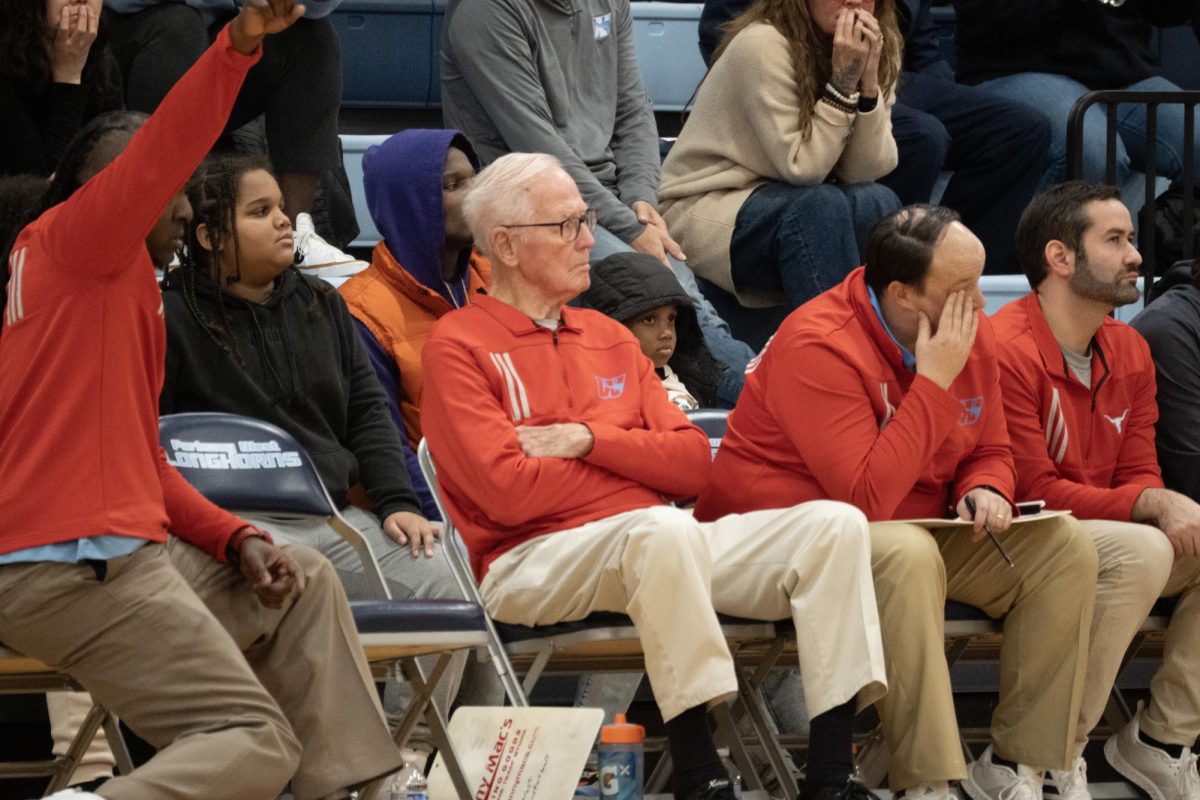Beep. Beep. Beep. The sound of an exasperating alarm clock. Time passes as you lay in bed, staring at the wall, dreading the long day ahead. Finally, you get up, make your bed, get dressed and head off to school.
According to the National Federation of State High School Associations (NFHS), more than 7.8 million high school students in the United States participate in school sports. Despite the positive correlations between athletic participation and academic performance, student-athletes face obstacles from faculty, non-student athletes and parents.
As spring sports begin and the last few months of school roll around, students feel the rush of preparing for a long season ahead with the thought of impending finals and AP testing. With 24 hours in a day, being a student-athlete often causes mental strain on students. During a regular school week, students wake up around 5-6 a.m. to attend nearly a seven-hour school day, only to spend two more hours participating in a sport — leaving them only the night to accomplish other activities.
Some students who live further away from the county must take more time to get home. Track and field sprinter and sophomore Lucy Penton finds it difficult to maintain a balanced routine with the limited time she has after practice.
“[Getting home late is] a challenge, especially after workouts. I go home from practice, I have homework and I’m tired, but I still have to shower and prepare for school the next morning. It’s hard finding the right balance because you have to keep up your grades and manage your schoolwork, but you also spend a lot of time working out perfecting your craft,” Penton said. “It’s draining.”
Across the board, mental health concerns have been a major topic regarding the well-being of student-athletes. Athletes are driven to be focused, goal-oriented and high-achieving individuals; however, these same qualities that allow them to excel in their sport and classroom are also the same qualities that create depression, anxiety and mental strain.
Those who have a work-life are also at more risk of being overwhelmed. In the typical work-week routine, some students wake up during the early hours and arrive home after dark while still having to complete any given work that hasn’t been checked off.
“For me, the most important thing is getting enough sleep. I normally cut my [work] hours, but work more days so it doesn’t affect my outside life. Teachers never [make it any easier] just because I say I play a sport, so I try my best to balance everything and make sure my grades are [good] while being a student-athlete,” senior Tristen Banks said.
Faculty members and athletic coaches can sometimes make it harder to co-exist in both the scholarly and athletic fields. Teachers want their students to learn and maintain high academic standards, while coaches want their athletes to win.
These expectations push athletes to take on larger workloads. Some spring sports like track and field shift between busy and calm week schedules depending on their meet days. Athletes typically practice for about two hours after school. However, on meet days, athletes are out all day, leaving no time to accomplish other activities. Track and field runner and sophomore Jamaya Love believes her sport doesn’t offer much time for athletes to accomplish their goals and day-to-day to-do’s.
“I don’t have free time, [unless] if I take a day off to recover. The meets are [much] longer than your typical game and it doesn’t make it better if they’re after-school meets, because there’s no time to do anything besides eat, shower and sleep,” Love said.
While the lacrosse team also has two-hour practices, there are about 13 lacrosse games that typically only last about an hour. Varsity lacrosse player and junior JaHyghness Ward feels her schedule is more flexible than other spring sports.
“I have a lot of free time. I feel like [coaches] work us, but also know when to let us rest. We have days off, but if it’s a busy week, practice is in the morning for an hour-and-a-half [on the weekends,] so I have the rest of the day off,” Ward said.
Across the board, teachers and coaches must find a better way to help eliminate excessive stress. Coaches especially are often the primary line to an athlete’s mental health. To start, having open conversations about anxiety and goal-setting shows athletes that they can come to you if they’re experiencing negative emotions.
“It’s daylight savings now, so when I get home by [6 p.m.], it’s still day. [Our] coach puts our grades first. If we’re having trouble with something, they’ll set us aside after practice [and] talk about what we need to work on and who to go to,” Ward said.
While athletes are inevitably going to be under some duress, cultivating helpful sleeping, eating and mental health habits can support challenges that student-athletes face while competing and testing. One of the major contributors to performance anxiety is uncertainty. Coaches can help reduce this by preparing for worst-case scenarios when game strategies aren’t working or players aren’t performing their best. By having a backup plan, coaches can boost athletes’ confidence. Setting a clear goal for what they want to achieve in school and for sports improves self-esteem and self-efficiency.
“Getting schoolwork done isn’t a struggle for me as it might be for other student-athletes because I found what works in my schedule,” Love said. “You have to find a schedule that works for you because everyone participates in different activities and struggles in different areas in school.”

![Sports organizations have changed lives on and off the field, improving athletes’ muscle strength, reducing their risk of diseases and building energetic work capacity worldwide. However, many student-athletes struggle to balance schoolwork and athletic commitments, hoping to seek more understanding and support from their teachers and coaches. “To lessen mental strain student-athletes [face] and create a healthier, more comfortable lifestyle, there shouldn’t be any homework. I'm already [at school] for eight hours and [homework] creates a bigger load for student-athletes in AP or honors classes,” track and field sprinter and sophomore Lucy Penton said.](https://pwestpathfinder.com/wp-content/uploads/2024/04/DSC_0095-1-e1713883278514-1200x847.jpg)

![The varsity boys cross country team poses for a photo at the Mike Rose Soccer Complex in Memphis, Tenn. The Memphis Twilight Classic is the largest event the team attends. “[I enjoyed] hanging out with the team every day at practice,” Patten said. “I wanted to be the best I could for my team; I really wanted to help out.”](https://pwestpathfinder.com/wp-content/uploads/2025/09/XC-PHOTO-1200x822.jpg)

![Celebrating their landmark victory, the Parkway West Boys Hockey team gathers together on the ice. Over the course of the season, the team grew closer together while pursuing their final goal: winning the coveted Wickenheiser Cup. “[Winning the cup] was awesome. [As] a senior, it was super rewarding to end on a high note. It had to be the most memorable part of my career,” varsity hockey player and senior Hunter Beach said.](https://pwestpathfinder.com/wp-content/uploads/2025/03/DSC3974-Enhanced-NR-1200x799.jpg)

![Holding the disc, senior Nathan Thompson waits for an opportunity to pass to senior Timmy Fry. Parkway United’s ultimate frisbee team is made up of students from each of the four Parkway schools. “The one thing I really like about ultimate [frisbee] is the community because it’s so different from any other sport I've been a part of. [My] national teammates are people who we play against in the regular season, so we see each other all the time. It's always fun hanging out with [them],” Thompson said.](https://pwestpathfinder.com/wp-content/uploads/2024/12/C96A6823-1200x800.jpg)
![Senior Josie Grunzinger watches the football game intently from the sidelines on Oct. 18. Grunzinger stood out to the crowd as the only girl on the football team, encouraging other girls who want to play football to take a chance and go for a sport outside of their comfort zone. “If you think you could [play football] and you want to do it, just try it, because all it takes is to actually try it out,” Grunzinger said.](https://pwestpathfinder.com/wp-content/uploads/2024/10/Untitled-design-1200x675.png)


![With her arms held high, junior Jenna Rickelman throws the ball across the pool during a girls water polo practice. With hours of practice after school and over the summer, Rickelman saw many improvements in her water polo skills. “When I look at [my] stats, I'm so much better than I was last year,” Rickelman said.](https://pwestpathfinder.com/wp-content/uploads/2024/05/Untitled-design-2-.png)
![Putting on his helmet, catcher and senior Tommy Eschbach prepares to get in his primary stance. Despite losing 6-1 against Eureka on April 16, Eschbach didn’t let the tough loss affect his playing or mental health. “It's [so] easy to get caught up in the sport and what you're doing that [after] one bad game or a stretch of games it is hard to remind yourself that your worth as a person isn't directly related to your performance on the field,” Eschbach said.](https://pwestpathfinder.com/wp-content/uploads/2024/05/DSC_0415-1-1-1200x800.jpg)
